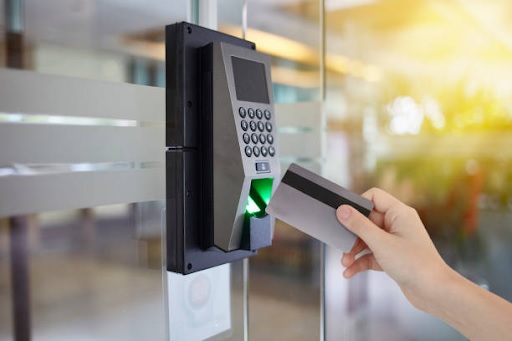In today’s fast-paced world, ensuring the security of our homes, businesses, and institutions is paramount. Traditional locks and keys are no longer sufficient to provide adequate protection against unauthorized access and security breaches. As technology continues to advance, card access control systems have emerged as a modern and effective solution for managing and securing access to various premises. In this comprehensive guide, we’ll delve into the significance of card access control systems, how they work, their benefits, and considerations for implementation.
Understanding Card Access Control Systems
A card access control system is a security solution that regulates and monitors entry to buildings, rooms, or restricted areas using electronic access cards or key fobs instead of traditional keys. These systems typically consist of three main components:
1. Access Control Panel: The access control panel serves as the central hub of the system, managing the communication between access devices (card readers) and the database of authorized users. It stores user credentials, access permissions, and transaction logs.
2. Card Readers: Card readers are installed at entry points such as doors or gates and are used to read electronic access cards or key fobs. When a card is presented to the reader, it sends the card’s information to the access control panel for verification.
3. Electronic Access Cards or Key Fobs: Electronic access cards or key fobs are issued to authorized individuals and contain unique credentials that are programmed into the access control system. These credentials are verified by the access control panel to determine whether access should be granted or denied.
How Card Access Control Systems Work
Card access control systems operate based on the principle of “who, where, and when.” Authorized individuals are granted access to specific areas at predetermined times based on their credentials and permissions. Here’s how the process typically works:
1. Authentication: When an individual presents their electronic access card or key fob to the card reader, the reader sends the card’s information to the access control panel for authentication.
2. Verification: The access control panel verifies the card’s credentials against the database of authorized users. If the credentials match an entry in the database and the individual has the necessary permissions, access is granted.
3. Logging: The access control system logs each access attempt, recording details such as the date, time, and identity of the individual requesting access. These logs can be used for auditing purposes and investigating security incidents.
4. Remote Management: Many card access control systems offer remote management capabilities, allowing administrators to add or remove users, update access permissions, and monitor access activity from a centralized dashboard or software interface.
Benefits of Card Access Control Systems
Card access control systems offer several benefits over traditional lock-and-key systems:
1. Enhanced Security: Card access control systems provide a higher level of security by eliminating the risk of unauthorized key duplication and offering features such as multi-factor authentication and encryption.
2. Improved Access Control: With card access control systems, administrators have granular control over who can access specific areas and when. Access permissions can be easily updated or revoked as needed, reducing the risk of unauthorized access.
3. Convenience: Electronic access cards or key fobs are more convenient to carry and use than traditional keys. They can also be easily deactivated if lost or stolen, mitigating security risks.
4. Audit Trail: Card access control systems generate detailed audit trails of access activity, providing valuable insights into who accessed which areas and when. This information can be invaluable for security audits, compliance, and incident investigation.
5. Scalability: Card access control systems are highly scalable and can be easily expanded to accommodate growing organizations or changing security needs. Additional card readers and access points can be added as needed without requiring extensive infrastructure changes.
Considerations for Implementing Card Access Control Systems
When implementing a card access control system, several factors should be taken into account:
1. System Integration: Consider how the card access control system will integrate with existing security infrastructure, such as surveillance cameras, alarms, and monitoring systems.
2. User Training: Proper training should be provided to administrators and users to ensure they understand how to use the system effectively and adhere to security protocols.
3. Backup and Redundancy: Implement backup and redundancy measures to ensure uninterrupted access control in the event of system failures or power outages.
4. Data Privacy and Compliance: Ensure that the card access control system complies with relevant data privacy regulations and security standards to protect sensitive information.
5. Maintenance and Support: Establish a maintenance schedule and support plan to keep the system running smoothly and address any technical issues promptly.
Card access control systems offer a modern and effective solution for managing and securing access to various premises. By replacing traditional locks and keys with electronic access cards or key fobs, these systems enhance security, improve access control, and provide valuable audit trail information. When implementing a card access control system, it’s essential to consider factors such as system integration, user training, backup and redundancy, data privacy, and maintenance. With proper planning and implementation, card access control systems can help safeguard your premises and provide peace of mind for years to come.
